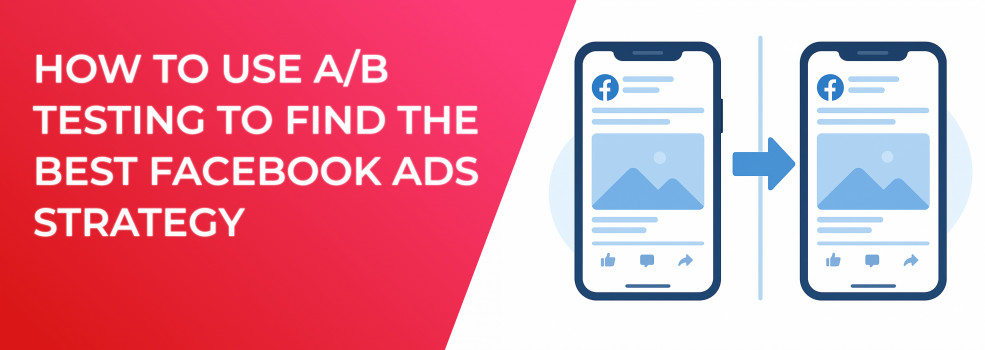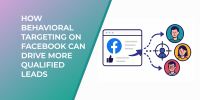Facebook’s ad auction never sleeps, which means your optimisation process must keep pace. Cost per click can spike overnight, engagement rate can plunge in days, and yesterday’s winning creative may become invisible tomorrow. A/B testing, also called split testing, is the fastest way to discover which elements truly improve Facebook ad performance metrics such as click-through rate, cost per result and return on ad spend. In the guide below, you’ll learn why testing matters, how to run airtight experiments, and how to avoid the pitfalls that derail even seasoned media buyers. Along the way we’ll weave in high-intent phrases like campaign budget optimisation, advantage campaign budget, dynamic creative ads and lookalike audience Facebook so your article ranks as well as it converts.
1. Why A/B testing is non-negotiable for better Facebook ad performance
Before diving into the technical details, consider the three benefits that make A/B testing essential to any Facebook ad optimization workflow:
-
Facts beat opinion. A fresh headline might look brilliant in the brainstorm, but only live Facebook ad analysis can confirm whether it improves click through rate Facebook ads or slashes cost per click Facebook ads.
-
The auction rewards relevance. Higher engagement signals the algorithm that your message resonates, lowering CPMs and lifting ad impressions Facebook so you reach more of your target audience Facebook ads.
-
Learning never stops. Each time you launch or edit an ad set, the system re-enters the learning phase. Continuous Facebook ads split tests feed new data quickly, helping you stabilise faster and optimize Facebook ads performance over time. If you want to shorten that shaky period, check out our guide on how to finish the Facebook learning phase quickly.
Put simply, A/B testing turns guesswork into measurable outcomes that fuel consistent growth long after the first campaign goes live.
2. Set up a clean testing environment
A rigorous setup prevents overlap, wasted spend and blurred insights.
-
Write one clear hypothesis first. Example: “A user-generated video will outperform a product-demo video on engagement rate Facebook ads.”
-
Control everything except the test variable. Keep campaign objective, schedule and budget identical. If you use advantage campaign budget, duplicate the campaign so both variants share the same daily cap.
-
Size your audiences properly. Testing prospecting ads? Aim for at least 100,000 users or a 1% lookalike audience Facebook so each variant exits the learning phase quickly. Need a refresher on building a broad yet relevant seed segment? Dive into Facebook Ad Targeting 101.
-
Track lower-funnel events. Install or verify your Facebook Pixel, then double-check that conversion rate Facebook ads and add-to-cart events are firing in Events Manager.
A thoughtful setup saves hours of head scratching later and ensures you can act on the numbers with confidence.
3. Choose variables that matter
Marketers often tweak everything at once, but isolating a single pillar lets you pinpoint exactly what lifts or drags down ROAS.
For a deeper debate on sequencing your experiments, see what to test first — creative, copy, or audience — in Facebook campaigns.
Key variables to experiment with during Facebook ad A/B testing, organized by pillar: creative formats, copy hooks, audience types, placement options and budget-optimisation settings.
Once you identify a winner, lock in that element and move to the next pillar, building a stack of proven improvements instead of a jumble of guesses.
4. Define success before you launch
Your objective dictates your KPI, so agree on the finish line early:
-
Awareness: impressions, reach, thumb-stop rate and Facebook ads benchmark CPM.
-
Consideration: average click through rate on Facebook ads, cost per landing-page view, outbound CTR.
-
Conversion: purchases, average cost per click Facebook, multi-day return on ad spend, lowest cost bid strategy efficiency.
Set a threshold for statistical significance—say 95 % confidence with 100 conversions or at least 1 000 clicks per variant. Ending a test too early is one of the costliest mistakes in performance marketing.
5. Build the test inside Ads Manager
When you’re ready to press go, follow these steps:
-
Duplicate your control ad set, preserving campaign objective and budget.
-
Click A/B Test, choose your variable (creative, audience or placement).
-
Split budget 50-50, or skew 70-30 if you want faster insights on the challenger.
-
Activate an automated rule that pauses any variant once cost per click Facebook ads exceeds the control by 30% after 5,000 impressions.
Add a clear name, e.g., “UGC-vs-ProductDemo_CTR”, so teammates can follow along, and set an end date if you need to cap spend.
6. Interpret results without fooling yourself
When the data starts flowing, resist the urge to crown a winner immediately. Instead:
-
Cross-check several metrics. A higher CTR is great, but if conversion rate Facebook ads crashes you may be attracting the wrong users.
-
Confirm confidence. Ads Manager reports statistical confidence; avoid decisions below 80%.
-
Monitor frequency. One variant can wear out quickly, inflating CPC and distorting results. Smart frequency capping will help you beat ad fatigue while your split test runs.
-
Consider attribution windows. Post-iOS-14 reporting can delay purchases; review both 7-day click and 1-day view windows before final judgment.
Variant B pulled ahead after Day 3 — proof that patience and statistical confidence pay off.
These safeguards ensure you scale genuine winners rather than mirages created by randomness or fatigue.
7. Scale what works
Testing without scaling is like mining gold then leaving it in the ground.
-
Promote the winner. Once you have a proven winner, follow the science of scaling Facebook ads to grow spend without wrecking ROAS. Increase its budget, move it into a broader campaign or feed it into Facebook ad scheduler rules for all-day coverage.
-
Iterate quickly. Turn the winning headline into five new variants or pair the champion image with a fresh audience such as Facebook remarketing past purchasers.
-
Layer tests. After creative stabilises, tackle placement or campaign budget optimization settings next.
-
Automate protection. Use rules to pause any ad whose performance falls below your Facebook ads benchmark so losers never drain spend again.
By codifying success and automating failure, you transform testing into an engine that compounds results month after month.
8. Common pitfalls and how to avoid them
Many advertisers test diligently yet still waste budget. The usual culprits:
-
Changing multiple variables at once — leaving the real driver of results hidden.
-
Stopping at the first sign of promise — let the algorithm gather enough data for stable conclusions.
-
Ignoring delayed attribution — purchases often appear days later, especially on iOS.
-
Starving variants — tiny daily budgets rarely reach significance.
If conversions stay stubbornly low even after disciplined testing, troubleshoot with our checklist on Facebook ads not converting.
Stay vigilant and your tests will pay dividends instead of delivering false hopes.
Key takeaways
-
A/B testing is the quickest route to evidence-based Facebook ad optimisation.
-
Control every factor except the single variable you want to learn about.
-
Measure success with KPIs tied to your funnel stage — CTR for awareness, conversion rate Facebook ads for sales.
-
Use systems like advantage campaign budget, dynamic creative ads and lowest cost bid strategy to amplify proven winners.
-
Iterate continuously; the Facebook marketplace evolves daily, and your testing cadence should evolve with it.
Run your next Facebook ad split test with discipline and the right Facebook ad performance keywords, and you’ll turn guesswork into growth on autopilot.

